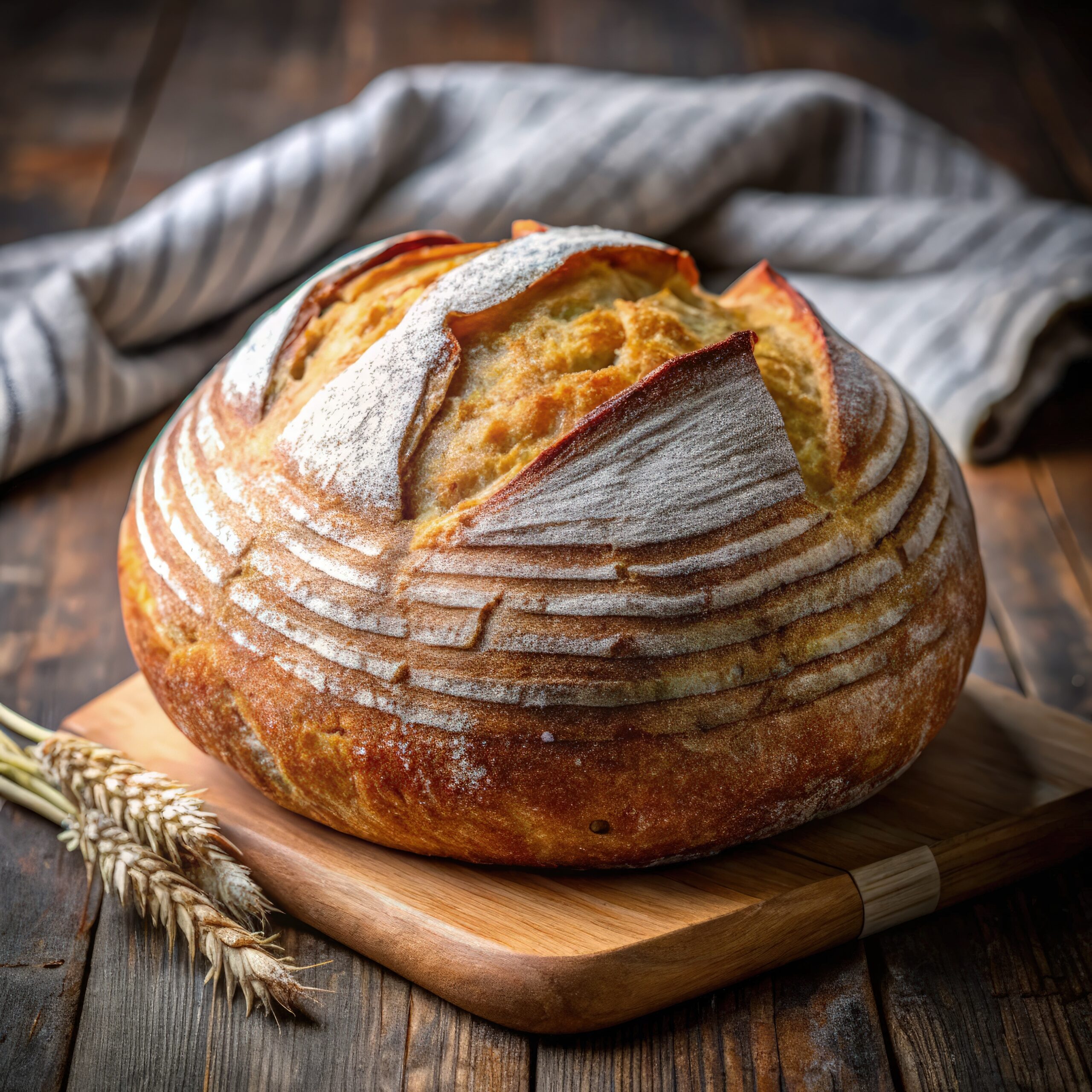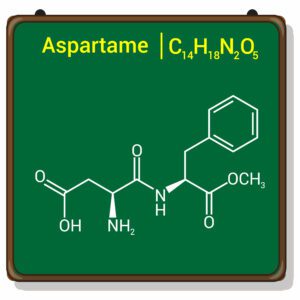
In recent years, sourdough bread has made a remarkable comeback.
It has captured the attention of health enthusiasts, food bloggers, and home bakers alike.
Once seen as an old-fashioned staple, it has now become a symbol of artisanal quality and health-conscious eating.
From its rustic appearance to its distinctively tangy flavor, sourdough bread stands out in a world dominated by processed and mass-produced options that contain high gluten, dyes, added sugars, and other man made chemicals
This surge in popularity is not just a passing trend.
People are turning to sourdough for its perceived health benefits and its artisanal appeal.
Amid rising concerns about gluten sensitivity, digestive health, and the artificial additives found in many commercial breads, sourdough offers a natural, minimally processed alternative.
But what exactly sets sourdough apart from other breads, and why is it considered a healthier choice?
To understand this, we need to delve into the unique process that makes sourdough bread what it is.

At the heart of sourdough bread lies a centuries-old technique known as natural fermentation.
Unlike conventional bread, which relies on commercial yeast to rise, sourdough uses a “starter”—a mixture of flour and water teeming with wild yeast and lactic acid bacteria.
This natural fermentation process is what gives sourdough its characteristic flavor, texture, and nutritional benefits.
The fermentation begins when flour and water are combined and left to sit, allowing the naturally occurring yeast and bacteria present in the flour and the environment to flourish.
This mixture, often referred to as a “starter” or “levain,” becomes the living culture that leavens the dough, breaking down starches and sugars into carbon dioxide and lactic acid.
This process can take anywhere from several hours to a few days, depending on the temperature and conditions, creating a slow, natural rise that enhances both the flavor and texture of the bread.
The symbiotic relationship between wild yeast and lactic acid bacteria in the starter is what sets sourdough apart from other breads.
The natural yeast helps the dough rise, while the lactic acid bacteria produce compounds that add complexity to the flavor.
This combination not only contributes to the bread’s unique tang but also offers several health benefits:
1. Easier Digestibility: The long fermentation process breaks down complex carbohydrates and proteins, including gluten.
This makes sourdough easier to digest compared to breads made with commercial yeast, which do not undergo this extended fermentation.
2. Lower Glycemic Index: The lactic acid bacteria produce organic acids that modify the structure of the bread’s starches.
This results in a lower glycemic index, meaning sourdough has a gentler impact on blood sugar levels compared to other breads.
3. Nutrient Availability: Fermentation also increases the bioavailability of certain nutrients.
Phytic acid, an anti-nutrient found in whole grains that binds minerals like zinc and magnesium, is broken down during the fermentation process, making these nutrients more accessible to the body.
The fermentation process not only influences the health benefits of sourdough but also its sensory qualities.
The lactic acid bacteria produce acetic acid and lactic acid, which give sourdough its distinctive tangy taste.
The long, slow fermentation allows for the development of complex flavors that are often described as nutty, savory, and slightly sweet.
In terms of texture, the fermentation process creates a moist, chewy crumb with a crisp, caramelized crust.
The natural yeast and bacteria work together to create a network of gluten that is strong yet extensible, resulting in the open crumb structure that sourdough enthusiasts crave.
From a nutritional standpoint, sourdough bread stands out because it is made with simple ingredients: flour, water, and salt with ZERO additives, preservatives, and sugars like commercial breads
This simplicity, combined with the benefits of fermentation, makes sourdough bread a healthier and more satisfying option for those looking to improve their diet.

Sourdough bread is more than just a delicious choice; it offers a range of health benefits that set it apart from other types of bread.
From its enhanced digestibility to its nutrient-rich profile, sourdough can be a valuable addition to a balanced diet.
Let’s explore these benefits in detail.
One of the standout benefits of sourdough bread is its improved digestibility, which can be attributed to the fermentation process.
During this process, natural yeasts and lactobacilli bacteria work together to break down gluten and other complex proteins in the dough.
Breakdown of Gluten and Other Complex Proteins: Gluten, a protein found in wheat and related grains, is often blamed for digestive discomfort in sensitive individuals.
In sourdough, however, the long fermentation process breaks down a significant portion of the gluten, making it easier for the body to digest.
This is why some people with mild gluten sensitivities find that they can tolerate sourdough better than other types of bread.
Benefits for Those with Gluten Sensitivity: It’s important to note that sourdough is not gluten-free and is not suitable for those with celiac disease.
However, for individuals with non-celiac gluten sensitivity or those who simply experience digestive discomfort after eating conventional bread, sourdough can be a gentler alternative.
The reduced gluten content, combined with the presence of beneficial bacteria, may help alleviate symptoms such as bloating, gas, and abdominal pain.
The glycemic index (GI) measures how quickly foods raise blood sugar levels after consumption.
Foods with a high GI cause rapid spikes in blood sugar, which can be harmful, especially for those with insulin resistance or diabetes.
Sourdough bread, however, has a lower glycemic index compared to many other types of bread.
How Sourdough Affects Blood Sugar Levels: The fermentation process in sourdough alters the structure of the carbohydrates in the dough.
The lactic acid produced by the bacteria slows down the rate at which glucose is released into the bloodstream.
This means that sourdough causes a slower, more gradual rise in blood sugar levels, reducing the risk of insulin spikes and crashes.
Comparison with Other Bread Types: In contrast, white bread and even some whole wheat breads have a higher glycemic index, leading to more significant fluctuations in blood sugar levels.
This can contribute to cravings, energy crashes, and increased risk of developing metabolic issues.
For people looking to manage their blood sugar levels, sourdough offers a more balanced and sustainable option.
Sourdough bread is not only easier to digest and better for blood sugar management but also boasts a rich nutrient profile that surpasses many other types of bread.
Availability of Vitamins, Minerals, and Antioxidants: The fermentation process enhances the availability of various nutrients present in the grains used to make sourdough.
It increases the levels of B vitamins, such as folate and thiamine, and improves the bioavailability of essential minerals like magnesium, zinc, and iron.
These nutrients play critical roles in energy production, immune function, and overall well-being.
Enhanced Absorption Due to Fermentation: One of the common issues with consuming whole grains is the presence of phytic acid, an anti-nutrient that binds to minerals and prevents their absorption.
During the sourdough fermentation process, phytic acid is broken down, making minerals more accessible to the body.
This means that eating sourdough can provide more nutritional benefits compared to other breads where these minerals remain bound and less available for absorption.
A healthy gut is essential for overall health, and sourdough bread can play a role in supporting a balanced gut microbiome.
Role of Probiotics and Prebiotics: While the high heat of baking kills most of the probiotics present in the dough, sourdough bread still acts as a prebiotic.
Prebiotics are non-digestible fibers that feed the beneficial bacteria in the gut, promoting a healthy balance of gut flora.
This, in turn, supports better digestion, a stronger immune system, and even improved mood and mental health.
Impact on Gut Microbiota: The lactic acid bacteria in sourdough produce compounds that have a positive effect on the gut microbiota.
These bacteria help create a more acidic environment in the intestines, which can inhibit the growth of harmful bacteria and support the proliferation of beneficial ones.
A balanced gut microbiota is linked to a reduced risk of inflammation, better nutrient absorption, and overall improved health.
In summary, sourdough bread offers a unique combination of improved digestibility, a lower glycemic index, a rich nutrient profile, and support for gut health.
These benefits make it a superior choice for those looking to optimize their diet and enjoy a healthier, more satisfying bread option.
In the next section, we’ll compare sourdough with other popular types of bread to highlight why it stands out as the healthiest option available.

While sourdough has gained a reputation for its health benefits, many people still consume other types of bread daily, assuming they are healthy alternatives.
However, not all breads are created equal.
Let’s compare sourdough with three of the most popular bread types—white, whole wheat, and multigrain—to see why sourdough stands out as the healthier choice.
White bread is one of the most widely consumed types of bread, yet it is also one of the least nutritious options available.
High Glycemic Index: White bread has a high glycemic index, meaning it causes rapid spikes in blood sugar levels.
Made from refined flour, it lacks the fiber content that helps to slow down the release of glucose into the bloodstream.
This can lead to quick energy crashes and increased hunger shortly after consumption, contributing to weight gain and making it difficult to maintain stable blood sugar levels, especially for individuals with diabetes or insulin resistance.
Refined Flour: The primary ingredient in white bread is refined wheat flour, which has been stripped of its bran and germ—the parts of the grain that contain most of its fiber, vitamins, and minerals.
What remains is mostly starch and a small amount of protein, offering little nutritional value.
This refining process not only removes essential nutrients but also makes white bread less satisfying, as the lack of fiber means it is digested quickly, leaving you hungry soon after eating.
Lack of Nutrients: Compared to sourdough, white bread is nutritionally deficient.
While some manufacturers fortify white bread with synthetic vitamins and minerals to replace those lost during processing, these added nutrients are not as bioavailable as those found in whole foods.
Moreover, white bread often contains added sugars, preservatives, and emulsifiers to enhance flavor and shelf life, further diminishing its nutritional profile.
In contrast, sourdough’s lower glycemic index, rich nutrient content, and digestibility make it a far superior choice for those seeking a healthier, more balanced diet.
Whole wheat bread is often touted as a healthier alternative to white bread, but it too has its drawbacks.
Potential Issues with Phytic Acid and Anti-Nutrients: Whole wheat bread contains more fiber and nutrients than white bread, as it is made from whole grain flour that includes the bran, germ, and endosperm.
However, the presence of phytic acid in whole grains can inhibit the absorption of key minerals like calcium, iron, and zinc.
Phytic acid is an anti-nutrient that binds to these minerals, reducing their bioavailability.
While sourdough fermentation breaks down phytic acid, making these nutrients more accessible, many whole wheat breads do not undergo this process, limiting their nutritional benefits.
Difficulties in Digestibility for Some People: While the high fiber content in whole wheat bread is generally seen as beneficial for digestive health, it can cause issues for some individuals, particularly those with sensitive digestive systems or irritable bowel syndrome (IBS).
The dense, fibrous nature of whole wheat bread can lead to bloating, gas, and discomfort.
In contrast, sourdough’s long fermentation process pre-digests many of the complex carbohydrates, making it gentler on the digestive system.
While whole wheat bread is a better choice than white bread due to its fiber and nutrient content, sourdough still offers an edge with its enhanced digestibility and nutrient bioavailability.
Multigrain bread has a reputation for being a superfood, but the reality is often more complex.
Often Just White Bread with Added Seeds: The term “multigrain” simply means that more than one type of grain is used in the bread.
However, many commercial multigrain breads are made primarily with refined white flour, similar to white bread, with a few additional grains or seeds sprinkled in.
This means that, despite its wholesome appearance, multigrain bread may still have a high glycemic index and lack the nutrient density that consumers expect.
Misleading Health Claims: Multigrain breads are often marketed as healthier options because of the inclusion of grains like oats, barley, or flaxseeds.
However, unless the bread is made with whole grains and the grains are well-distributed throughout the loaf, these benefits may be minimal.
In some cases, the grains and seeds are only present on the crust, providing little more than a visual appeal.
Furthermore, multigrain bread can be loaded with added sugars, oils, and other additives to enhance flavor and texture, undermining its health appeal.
In contrast, authentic sourdough bread is typically made from just a few simple ingredients: flour, water, and salt.
The fermentation process enhances its nutritional value, making it a genuinely healthy choice without the misleading claims often associated with multigrain products.
In summary, while white, whole wheat, and multigrain breads are common staples in many households, they do not offer the same level of health benefits as sourdough.
Sourdough’s unique fermentation process, nutrient availability, and digestibility make it a standout option for those looking to improve their dietary choices.
In the next section, we’ll explore the pitfalls of commercial bread production and how to identify genuine, health-promoting sourdough.

While bread is a dietary staple for many, not all breads are created equal.
The vast majority of commercially produced breads are laden with additives, preservatives, and sugars, compromising both their nutritional value and health benefits.
Understanding these issues can help consumers make more informed choices and appreciate the superior quality of authentic sourdough bread.
Commercial bread production prioritizes cost-efficiency and shelf life over nutrition and flavor.
To achieve these goals, manufacturers often rely on a host of additives and preservatives that extend the bread’s longevity and improve its texture.
Additives: Ingredients like dough conditioners (e.g., calcium propionate, azodicarbonamide), emulsifiers, and stabilizers are commonly used in commercial bread to improve dough elasticity and crumb softness.
While these additives make the bread more visually appealing and easier to mass-produce, they add little to no nutritional value and may even pose health risks for sensitive individuals.
Preservatives: To prolong shelf life and prevent mold growth, commercial breads are often treated with chemical preservatives like potassium sorbate and sodium benzoate.
While these compounds effectively reduce spoilage, they also contribute to the “unnatural” aspect of many store-bought breads and may cause adverse reactions in those with food sensitivities.
Added Sugars: Sugar is another common ingredient in commercial bread, used to enhance flavor, improve browning, and accelerate the yeast fermentation process.
However, consuming too much added sugar can contribute to a host of health issues, including weight gain, insulin resistance, and an increased risk of chronic diseases such as diabetes and heart disease.
While sourdough bread has gained popularity in recent years, not all sourdough is created equal.
Many store-bought “sourdough” loaves are, in fact, not true sourdough and lack the benefits associated with traditional fermentation.
Authentic Artisan Sourdough: Real sourdough bread is made from just a few simple ingredients: flour, water, and salt.
It undergoes a long, natural fermentation process that allows the wild yeast and bacteria to break down the starches and proteins in the flour, resulting in a tangy flavor, chewy texture, and enhanced nutrient profile.
This process takes time and skill, which is why true artisan sourdough can be more expensive and harder to find.
Store-Bought “Sourdough”: In contrast, many store-bought versions of sourdough are made with shortcuts to speed up production.
These breads may include commercial yeast, vinegar, or sourdough flavoring to mimic the taste of real sourdough, but they do not undergo the same fermentation process.
As a result, they lack the unique health benefits of authentic sourdough, such as improved digestibility, lower glycemic index, and enhanced nutrient availability.
To truly reap the benefits of sourdough, it’s essential to choose bread from a reputable artisan bakery or, even better, make your own at home.

With so many imitations on the market, identifying genuine sourdough bread can be challenging.
Here are some tips to help you spot the real deal.
When shopping for sourdough, pay close attention to the ingredient list.
Authentic sourdough should contain only a few basic ingredients:
It should be the only leavening agent listed.
Avoid breads that include commercial yeast, vinegar, sugar, or other additives, as these are signs that the bread may not be true sourdough.
Making sourdough at home can be a rewarding experience, and it allows you to control the ingredients and fermentation process.
Here are some basic steps to get you started:
Feed it daily with more flour and water until it becomes bubbly and active.
This process usually takes about 5-7 days.
Knead it until smooth, then let it rest for several hours to allow the fermentation process to develop.
Let it rise again for several hours or overnight in the refrigerator.
Bake the dough at high heat with steam to achieve a crisp crust and airy interior.
Enjoy it with your favorite toppings or simply with a pat of butter to savor its complex flavors.
By making your own sourdough, you can ensure the quality and authenticity of your bread while also enjoying the creative and meditative process of baking.

Sourdough bread is not just a delicious alternative to conventional bread; it’s a nutritional powerhouse with a rich history and unique health benefits.
Its natural fermentation process makes it easier to digest, more nutrient-dense, and better for blood sugar management compared to other popular bread types like white, whole wheat, and multigrain breads.
The commercial bread industry is rife with shortcuts, additives, and misleading claims that compromise both flavor and health.
Authentic sourdough, whether sourced from a reputable bakery or made at home, offers a return to simplicity and tradition, providing a wholesome food that nourishes the body and delights the senses.
If you’re looking to improve your diet and enjoy better health, consider making the switch to real sourdough bread.
Whether you buy it from a trusted artisan baker or embark on the journey of making your own, the benefits are well worth the effort.
Embrace sourdough as a staple in your diet, and experience for yourself why this ancient bread has stood the test of time.

A new study suggests that a widely used sugar substitute found in diet sodas, chewing gum, and low-sugar yogurt may elevate insulin levels. This could increase the long-term risk of heart disease. “Artificial sweeteners have infiltrated nearly all types of food, making it crucial to understand their long-term health effects,” said Yihai Cao, senior author […]

Diet Coke has long been a fan-favorite among soda lovers who want a fizzy, guilt-free alternative to traditional soft drinks. While its zero-calorie, zero-sugar label makes it seem like a healthier option, the reality is far more concerning. Despite its undeniable popularity, Diet Coke’s nutritional profile has raised red flags among health experts for years. […]

New study shows that embracing an anti-inflammatory, plant-forward diet can support cognitive function and help reduce the risk of dementia. What You Eat Shapes Your Brain The food you eat doesn’t just impact your body—it also affects your brain. Research suggests that eating an anti-inflammatory, plant-based diet can help improve memory, focus, and overall brain […]